Regional Cooperation: the Caribbean’s Renewable Energy Future
With solar, wind, geothermal, and marine energy potential, Caribbean islands have a tremendous availability of domestic renewable energy resources. Yet the region stands at an energy crossroads, facing heavy dependence on imported fossil fuels, exposure to volatile oil prices, and undiversified energy supply.
The Caribbean region is a paradise for renewable energy.
Consistent winds, sunshine all year, and hot lava inside volcanic islands make the region the ideal location for the development of renewable energy. Small-scale hydropower resources are already widely used in the region’s small island states, providing electricity access to remote populations. Geothermal resources, which are currently available but unexploited, have the potential to make several of the islands renewable energy exporters.
However, Caribbean islands continue to be plagued by high and volatile energy prices with no opportunities for economies-of-scale or diversity in electricity supply. Similarly, climate change impacts such as warmer temperatures, sea level rise, and the increased frequency and intensity of storms all pose major threats to the region’s small island economies.
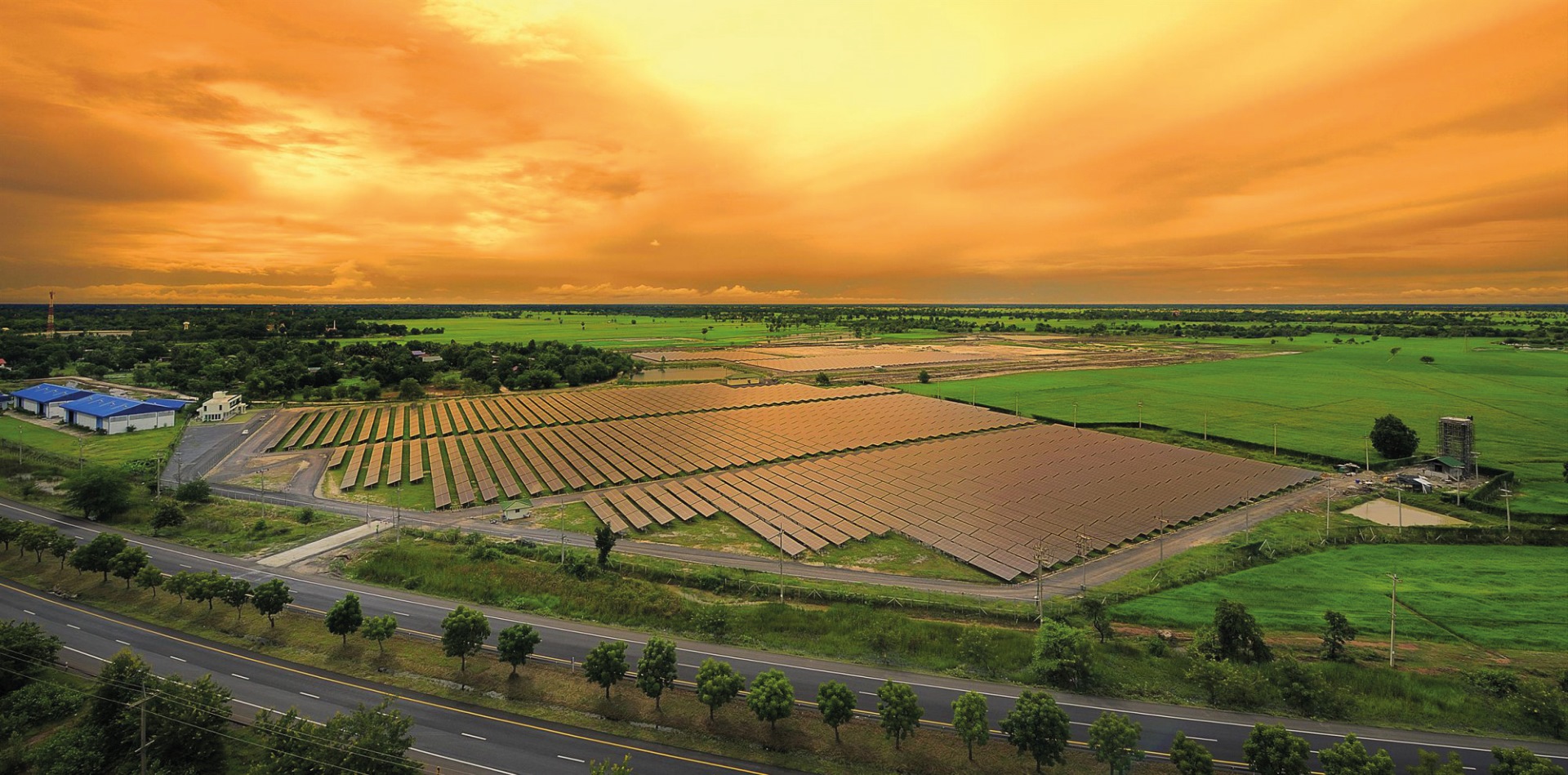
Individually, almost all Caribbean countries have seen success with renewable energy development. However, these individual efforts cannot be effective without a coordinated approach through harmonized regional policies, legislation, and interconnectivity solutions. All these approaches could offer wonderful opportunities to maximize each island’s individual resources while working together toward common and coherent renewable energy development goals.
Exploiting the potential
Recognizing the need to forge a coordinated and sound approach to addressing regional energy challenges, The Caribbean Community (CARICOM) began developing a regional energy strategy in 2002. CARICOM’s first energy policy was approved in 2013 and set a region-wide target of installing 47% renewable energy generation capacity, a 33%
improvement in energy efficiency, and a 46% cut in greenhouse gas emissions by 2027. To complement this regional approach, all 15 CARICOM Member States have also shown their individual commitment towards the development of renewable energy and have set national targets to achieve those goals (Table 1 and Table 2).
The Caribbean region is a paradise for renewable energy.
Today, the increased use of renewable energy and improvements in energy efficiency have become the core focus of CARICOM’s energy activities. The combination of region-wide goals and national targets under CARICOM provide a powerful long-term vision which makes renewable energy a key pillar in the energy sectors of respective member states and across the region.
In addition to formal regional targets, a regional center was inaugurated in 2015 to further enhance collaboration on renewable energy and energy efficiency. The Caribbean Center for Renewable Energy and Energy Efficiency (CCREEE) is located in Bridgetown, Barbados, and aims to address all gaps in the areas of capacity development, knowledge and data management, awareness raising, investment, and business promotion in the region’s renewable energy sector.
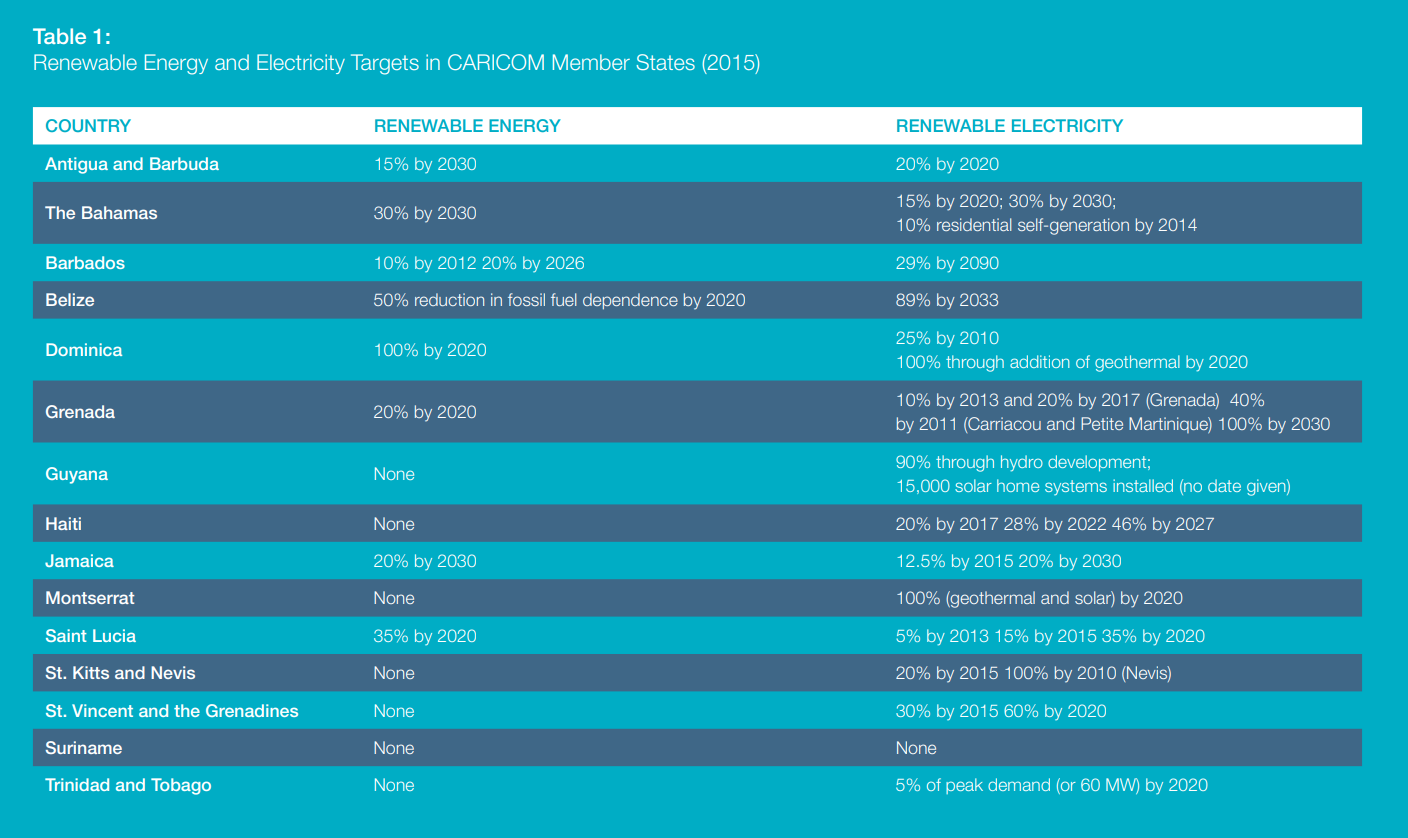
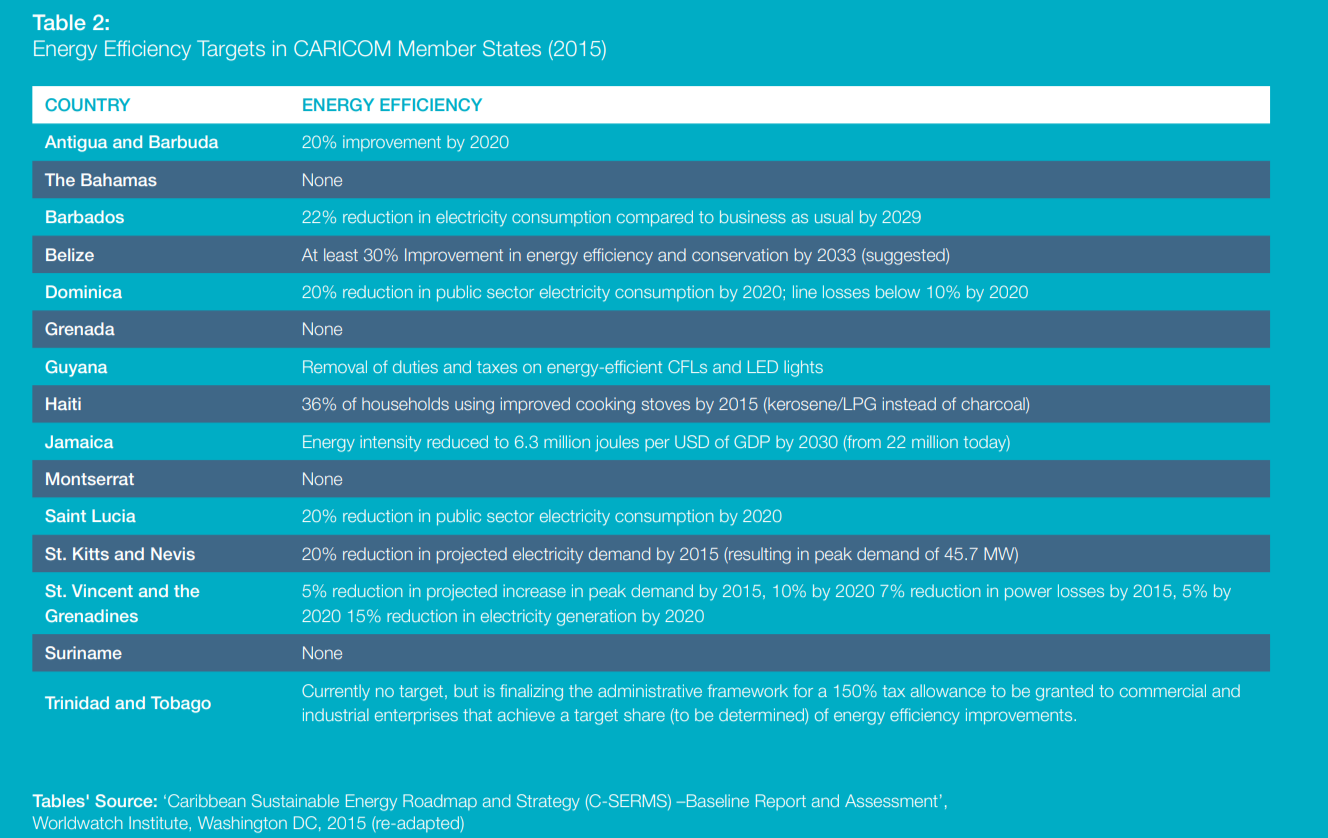
A dirty and expensive reality
CARICOM’s approach and bold targets provide an ambitious vision to boost renewable energy across the region. If carried out successfully, these goals will establish CARICOM as a global leader in sustainable energy development. However, despite having all the ingredients to dive into renewable energy, Caribbean countries still face a dirty and expensive reality:
90-100% of electricity in most countries in the region comes from imported fossil fuels.
- High energy costs dampen the region’s competitiveness and potential growth
According to the Rocky Mountain Institute, 90-100% of electricity in most countries in the region comes from imported diesel and fuel oil. Caribbean electricity users pay between $0.20 and $0.50 per kWh, in contrast with the average retail price in the United States of $0.098 per kWh. The International Monetary Fund (IMF) has estimated that in 2012 the national electricity bill in Caribbean countries represented as much as 9% of an individual country’s GDP – a burden for both households and industry. Ultimately, these resources are transferred directly to oil companies instead of going towards tapping into plentiful domestic renewable energy sources. - The power market structure is under-regulated and supply is undiversified
The electricity markets in the Caribbean islands are served by a single utility companies on each island, which hold exclusive licenses for the generation, transmission, distribution, and sale of electricity. However, the financial status of most of these utilities is weak due to the high cost of diesel generation and technical and commercial efficiency losses. Consequently, most of these monopolies are not in the position to providing adequate financing instruments for investing in improvements in the generation capacity of renewable sources. This leaves consumers without access to reliable and affordable energy. - Power systems suffer from inefficiency and high system losses
Electricity generation in the region depends on power plants, while transmission and distribution lines are inefficient, unreliable, and not well maintained. This causes major technical and commercial transmission losses for the grid (Figure 1) as well as frequent power cuts and load shedding, which have led to the installation of private diesel generators on many islands. - Small-size projects and limited financial resources hinder investments in renewable energy
Caribbean countries are characterized by small markets with small-scale projects, which are less attractive for international investors. This also creates significant problems in obtaining private financing for national and local investors as many large financial institutions like international commercial banks are cautious if not unwilling to consider small projects. Projects below $10 million are often not considered at all, and even when projects approach $20 million it is difficult to create interest among large investors. Similarly, raising funds for small renewable projects from local commercial banks is challenging due to their limited resources. Local banks tend to operate in small economy systems, and so have lower limits for project costs. More importantly, they have little or no experience in developing bankable renewable energy projects. - Weak regional institutional support
In many of the islands, the implementation of national policy commitments for renewable energy is still at an embryonic stage. Transforming these policies into investment opportunities and creating a vibrant market with an industrial renewable energy sector is a lengthy process. The existing regional institutional framework is not yet fully prepared to support CARICOM members to effectively carry out capacity development, knowledge and data management, awareness, as well as support investment and business promotion in the sustainable energy sector. The local private sector and industry are unable to take advantage of the growing sustainable energy markets and job opportunities.
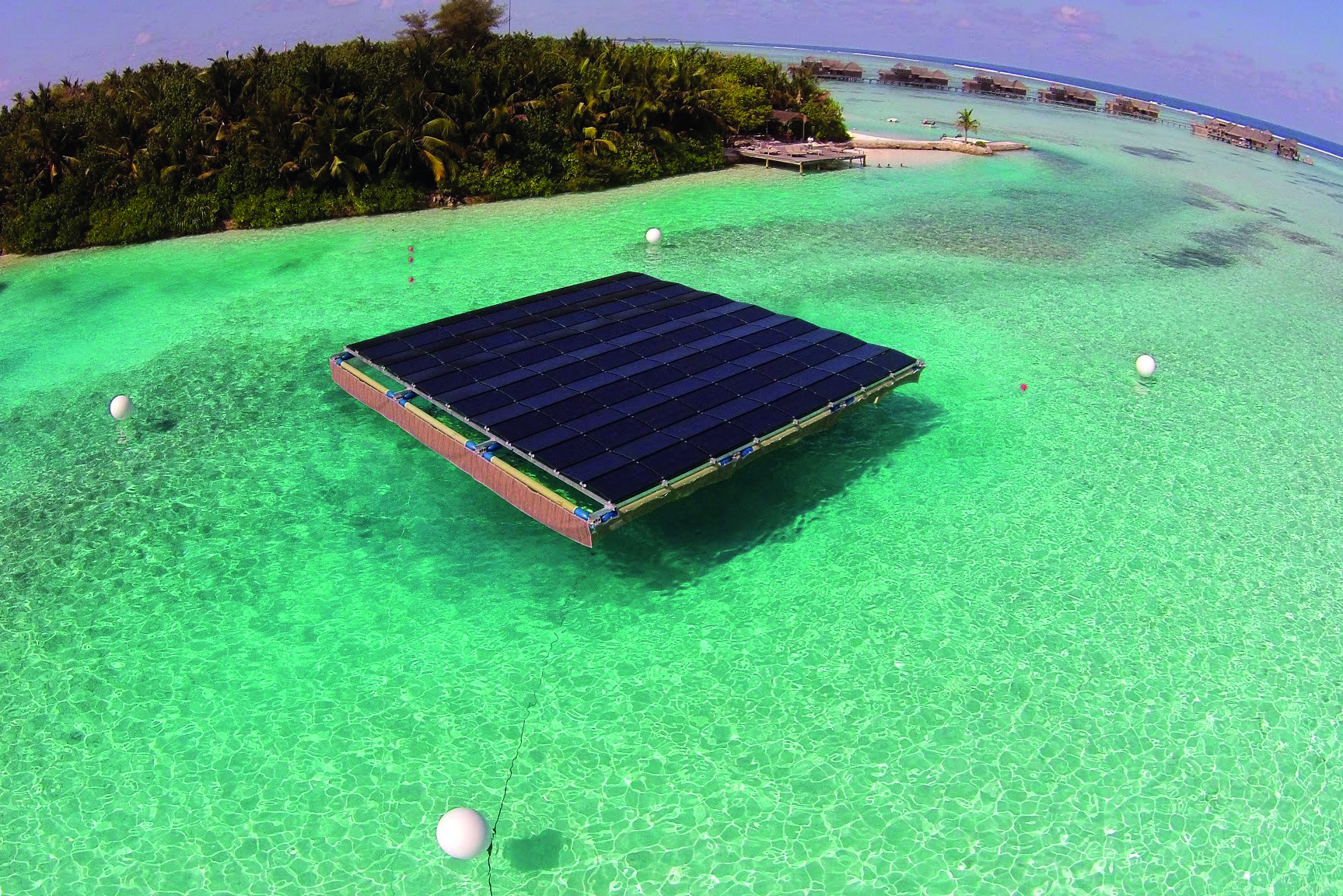
Sailing towards a clean energy future
In this challenging context, there are three critical elements that could help the Caribbean region to exploit more fully its renewable energy potential:
- A cohesive and coordinated regional approach
Every island has different needs and potentials, and so regional cooperation can be a useful tool to facilitate the creation of sustainable energy investments, markets, and industries. CARICOM’s policies, activities, and programs demonstrate the region’s understanding that having a cohesive and coordinated regional approach will make it easier to tackle the many challenges of a fundamental energy transition. Although individual members can contribute greatly to advancing the use of renewable energy, regional collaboration offers opportunities to share best practices and experience, driving development more effectively.
Regional cooperation can leverage the combined economic resources of individual states and the complementary renewable energy resources across the region. This is particularly evident in the development of bankable projects. In fact, the islands’ economies are too small to independently develop renewable energy projects on a scale large enough to attract investment. A regional approach can aggregate projects and reduce transaction costs which will contribute to the development of regional supply chains. This will ease the financing of energy initiatives within the Caribbean, improve knowledge-sharing and capacity-building, and lead to broader economic and social benefits throughout the region, including faster job creation. - Cross-border interconnection between islands
The small size of each island’s energy market and corresponding high energy costs provide the key barrier to increasing renewable energy solutions. Here, increased interconnectivity between islands presents a highly economical option. As the region is composed of a large quantity of isolated and widely dispersed small island states with low energy demand, interconnectivity could potentially pose some physical challenges for designing and installing an electricity structure. However, cross-border interconnection solutions could allow for the development of utility-scale renewable projects and thus pave the way for greater security of supply, flexibility within the power systems, and larger use of renewables. - Public sector and energy sector reform
Many of the barriers hindering development of renewable energy in the private sector come from the public sector. For renewable energy projects to thrive in the Caribbean, it is vital for local governments to facilitate a more favorable investment environment that offers strong encouragement to renewable energy investments and technology developments. This could be fostered through a proper legislative and regulatory framework, which would be more inviting to private investments in financing and developing scale renewable energy projects.
Similarly, the urgent need for the Caribbean to reform its energy sector is clearly highlighted by the issue of high energy costs and their impact on the competitiveness of the region. The decline in oil prices should be viewed as a temporary phenomenon, one which should be used as an opportunity for making the necessary decisions to reduce dependency on expensive imported fossil fuels. This is critical because it contributes to the high cost of business and affects the growth potential of the economies in the region.
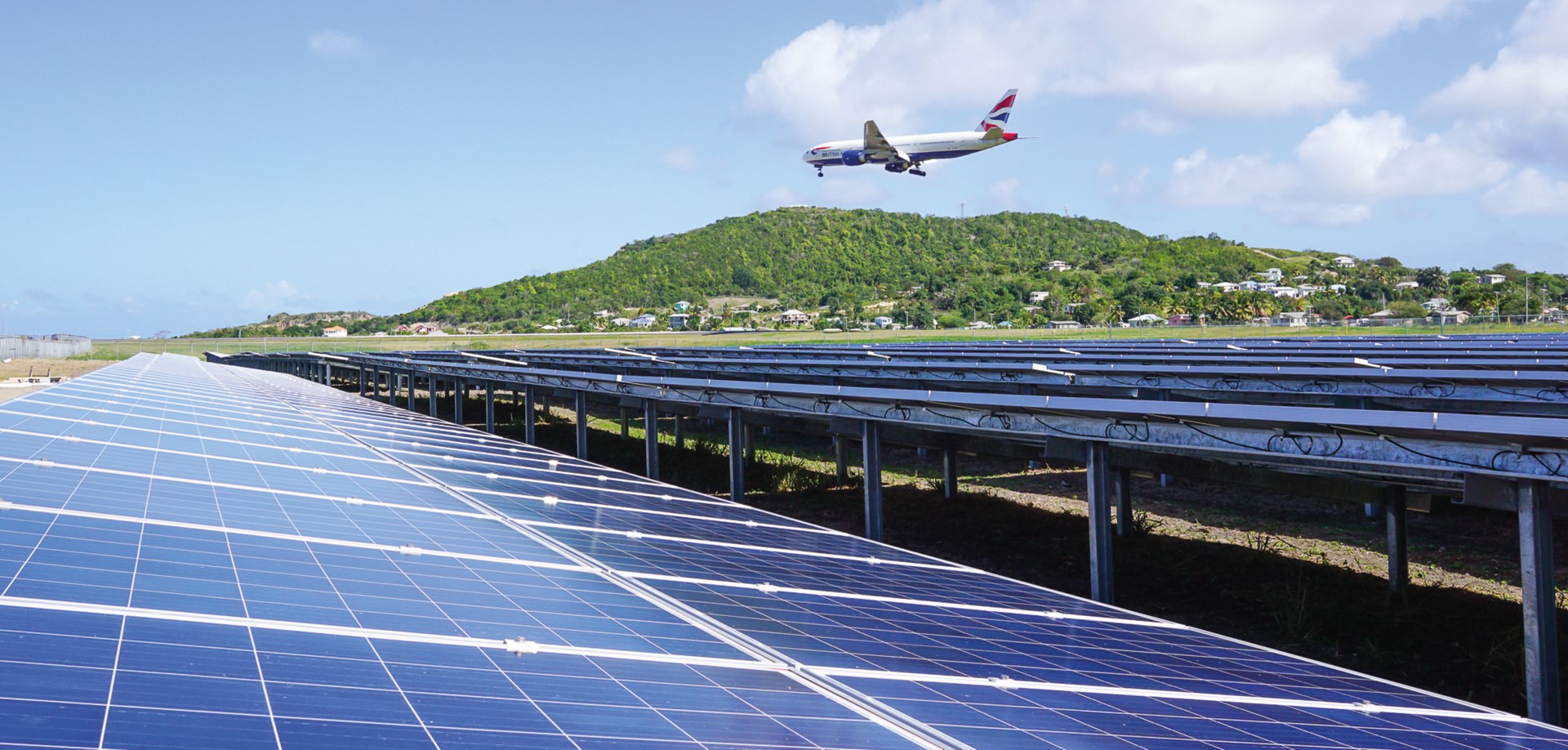
Though their relative isolation has provided a barrier to the energy transition for nations in the Caribbean, the possibility of increased interconnectedness provides a possible solution through which members of CARICOM can work towards renewable energy. With the abundant natural resources already in place, current low oil prices, and energy goals already in place, there is a bright future ahead for sustainable and self-reliant energy in the Caribbean.